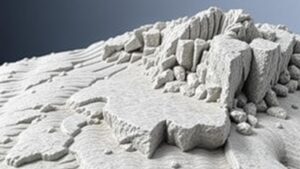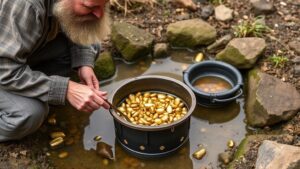How to Use Portable Dredges to Work Shallow Water Gold Deposits
How to Use Portable Dredges to Work Shallow Water Gold Deposits
Gold prospecting in shallow waters has seen a resurgence in popularity, particularly as advances in portable dredge technology have made it more accessible to hobbyists and professionals alike. This article explores the effective use of portable dredges for extracting gold from shallow water deposits, providing insights into operational techniques, equipment selection, and environmental considerations.
Understanding Portable Dredges
Portable dredges are versatile machines designed for the extraction of sediments and materials from riverbeds or lakes. They come in various configurations, but all share a common purpose: to transport materials from beneath the water surface to a processing area.
Key features of portable dredges include:
- Mobility: Lightweight designs allow for easy transportation to remote locations.
- Versatility: Can be used in various water depths and conditions.
- Customizable attachments: Different suction heads or nozzles can be utilized for specific sediment types.
Selecting the Right Dredge
Choosing the appropriate portable dredge depends on several factors including the intended application, water depth, and the expected type of sediment. Here are key considerations:
- Suction Power: The dredges power should match the sediment density and depth. For example, a model with a larger pump can handle thicker materials.
- Weight and Size: If portability is crucial, opt for lighter models that can fit easily in a vehicle.
- Attachments: Look for dredges with interchangeable heads for different sediment types, such as gravel or silt.
Operational Techniques
Effective use of a portable dredge involves following best practices to maximize gold recovery. Below are fundamental techniques:
- Location Selection: Target areas with known gold deposits, such as inside bends of rivers or near the base of fast-flowing streams.
- Dredging Depth: Adjust the dredge to work within a range of 2 to 4 feet to optimize recovery while managing equipment balance.
- Slow and Steady: Operate the dredge at a consistent speed to allow for maximum sediment transfer without overwhelming the system.
Environmental Considerations
While dredging can be lucrative, it is essential to conduct operations responsibly to minimize environmental impact. Some key practices include:
- Local Regulations: Always check local laws and obtain necessary permits before dredging in public waterways.
- Minimizing Disturbance: Aim to disturb the riverbed as little as possible to preserve natural habitats.
- Waste Management: Dispose of collected debris responsibly to prevent pollution.
Case Study: Successful Portable Dredging Operation
A successful example of using portable dredges can be found in the American River, California. Prospectors utilizing lightweight dredges successfully extracted gold flakes and nuggets, often finding amounts exceeding $200 a day during peak seasons. By employing eco-friendly practices and adhering to state regulations, they not only achieved economic success but also promoted sustainable gold recovery.
Conclusion and Actionable Takeaways
Using portable dredges for shallow water gold deposits can be a rewarding endeavor when approached with the right knowledge and care. Remember to:
- Conduct thorough research on local regulations and obtain necessary permits.
- Select a dredge that suits your specific needs based on water conditions and sediment type.
- Adhere to environmental best practices to mitigate impact on ecosystems.
By following these guidelines, you can enhance your gold prospecting experience while contributing to responsible and sustainable practices in the field.


